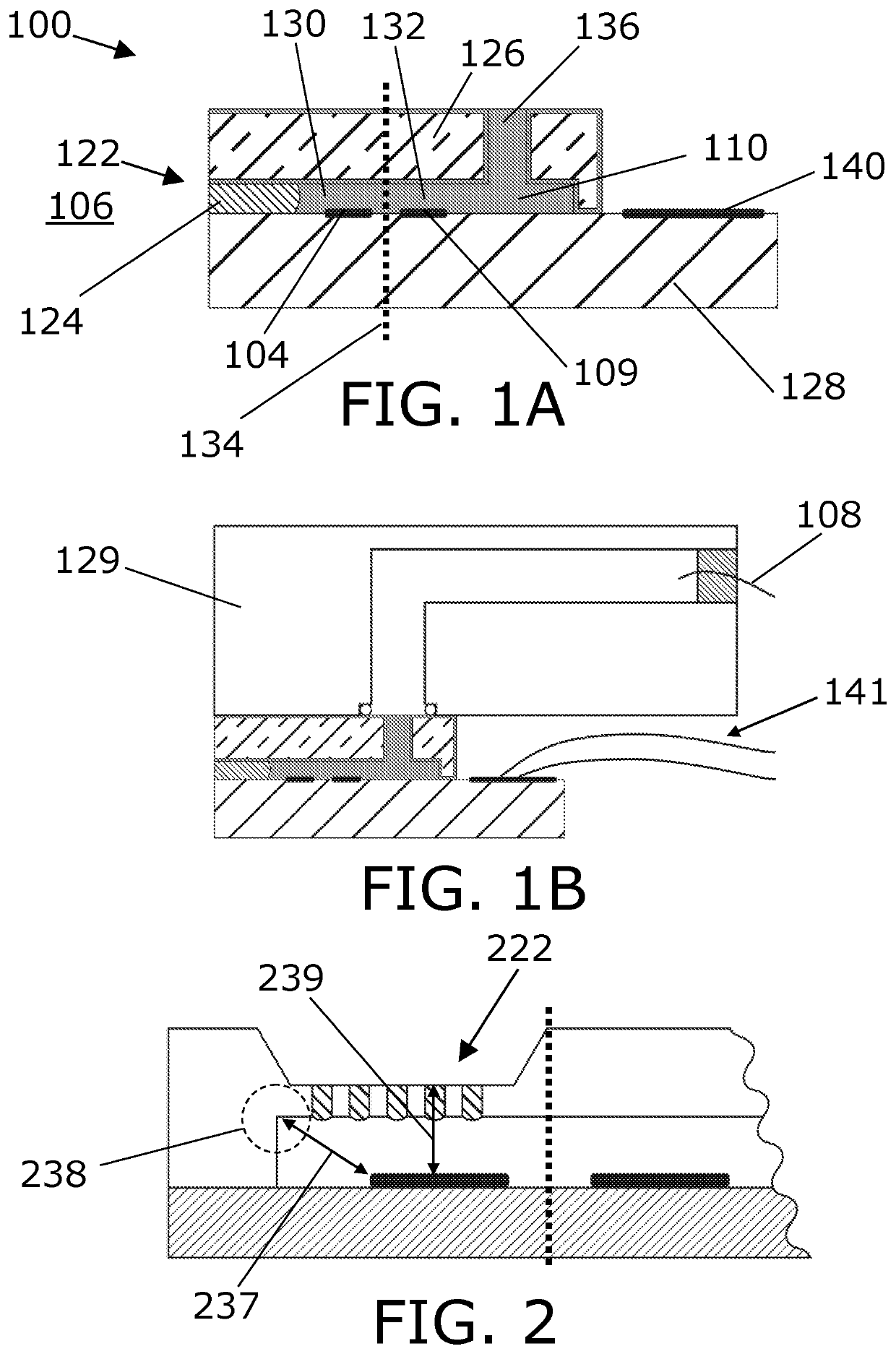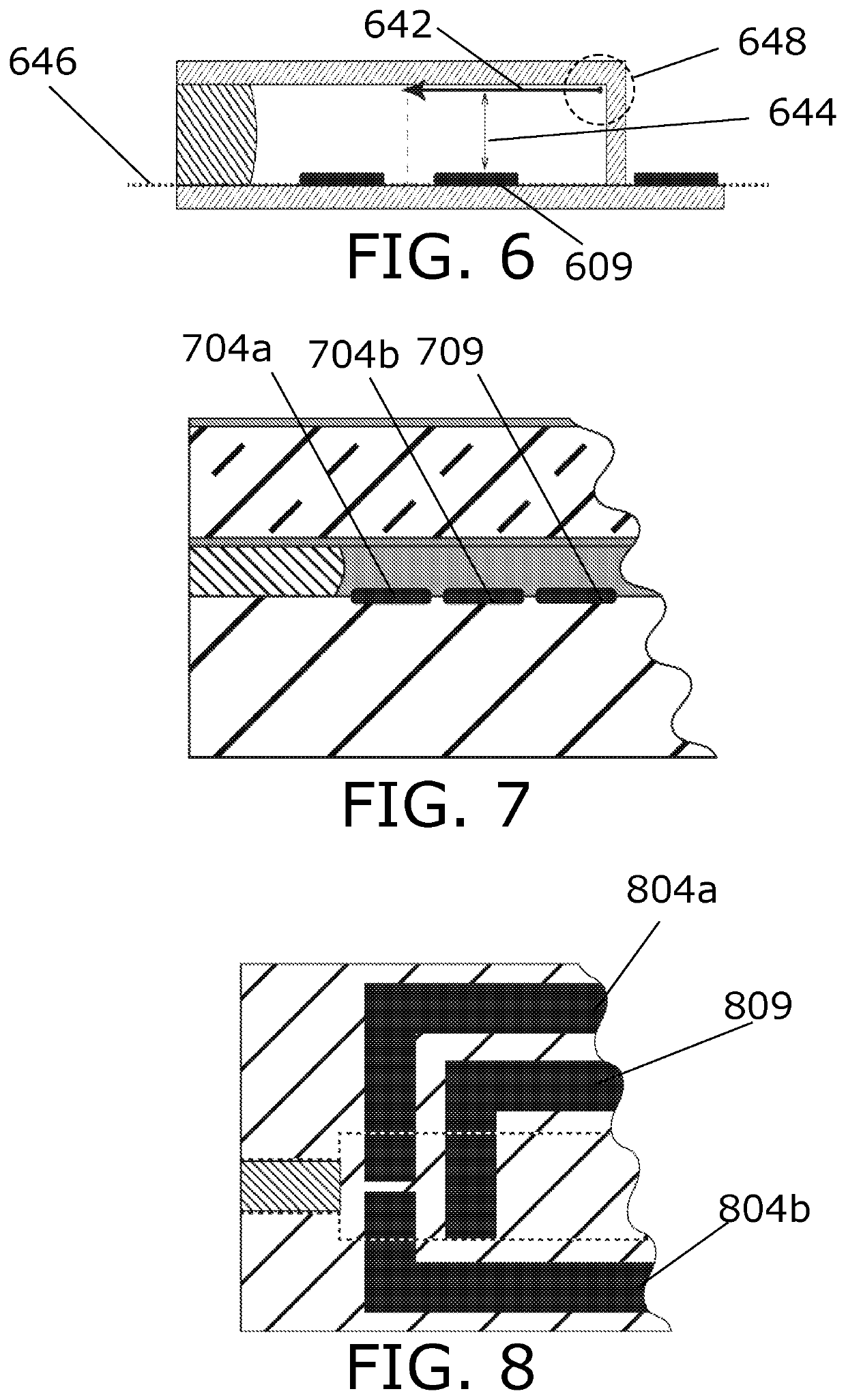Electrochemical sensor with thin film guard electrode
a technology of electrodes and electrodes, applied in the field of electrochemical sensors, can solve the problems of insensitive, difficult to manufacture, fragile, bulky, etc., and achieve the effects of improving manufacturing tolerances, reducing inter-sensor variations, and increasing capillary forces
- Summary
- Abstract
- Description
- Claims
- Application Information
AI Technical Summary
Benefits of technology
Problems solved by technology
Method used
Image
Examples
Embodiment Construction
[0161]FIG. 1A depicts an electrochemical sensor 100 for sensing an analyte in an associated volume 106, the sensor comprising[0162]a first solid element (126),[0163]a second solid element (128) being joined to the first solid element,[0164]a chamber (110) being placed at least partially between the first solid element and the second solid element, said chamber comprising[0165]a reaction region (130), and[0166]a reservoir region (132) being connected with the reaction region,[0167]wherein an analyte permeable opening (122) connects the reaction region (130) with the associated volume (106), such as said analyte permeable opening forming a diffusion barrier between the associated volume and the chamber, and wherein the electrochemical sensor (100) further comprises[0168]an analyte permeable membrane (124) in said analyte permeable opening, such as a silicone membrane, such as a membrane which enables separating liquids (such as aqueous solutions) on either side of the analyte permeabl...
PUM
| Property | Measurement | Unit |
|---|---|---|
| area | aaaaa | aaaaa |
| distance | aaaaa | aaaaa |
| differential pressure | aaaaa | aaaaa |
Abstract
Description
Claims
Application Information
 Login to View More
Login to View More - R&D
- Intellectual Property
- Life Sciences
- Materials
- Tech Scout
- Unparalleled Data Quality
- Higher Quality Content
- 60% Fewer Hallucinations
Browse by: Latest US Patents, China's latest patents, Technical Efficacy Thesaurus, Application Domain, Technology Topic, Popular Technical Reports.
© 2025 PatSnap. All rights reserved.Legal|Privacy policy|Modern Slavery Act Transparency Statement|Sitemap|About US| Contact US: help@patsnap.com



